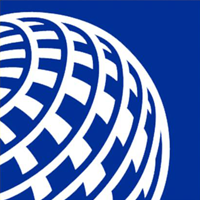Akron-Canton Airport Preparing to Weather COVID-19 Pandemic

Akron-Canton Airport Preparing to Weather COVID-19 Pandemic
Amid Sweeping Schedule Cuts by Airlines, CAK is Adjusting to the New Normal
As air transportation grinds to a near halt, the aviation industry is taking an astounding economic blow from the COVID-19 pandemic.
The Akron-Canton Airport (CAK) is no exception. In the past two weeks, CAK has received news that eight of 13 nonstop routes have been impacted with reductions in seats or suspension of service – not because of performance, but because of COVID-19.
The latest round of airline schedules for April 2020 show CAK will have a total of 25% less seats than the year prior and consist of the following major changes:
American Airlines
- LaGuardia (LGA): Daily service has been reduced temporarily to one day a week (-224 seats/week)
Delta Air Lines
- Atlanta (ATL): Smaller aircraft put on route (-511 seats/week)
Spirit
- Ft. Myers (RSW): Seasonal service ended one month early (-580 seats/week)
- Tampa (TPA): Seasonal service ended one month early (-435 seats/week)
United Airlines
- Newark (EWR): Route canceled one month early (-650 seats/week)
- Houston (IAH): Temporary suspension of route until October 1, 2020 (-532 seats/week)
- Washington Dulles (IAD): May launch suspended, date unknown (-1,300 seats/week)
*Published as of March 23, 2020
The airport has been monitoring the situation from the early days of the outbreak and has anticipated reduced service as the airlines cut scheudles to meet travel demand.
“As an economic engine in our region, we need to get on the other side of this pandemic to serve our community with the vibrant air service we know it deserves,” said Ren Camacho, CAK President and CEO. “When we do get to the other side, the landscape will likely look much different than before. That’s why we are working closely with our corporate partners and leisure travel agencies to relay pertinent travel information to our airlines to help shape that future.”
All airlines have cut capacity at record rates:
- American Airlines - March 16, 2020: implemented reduction of international capacity by 75% year-over-year (“YOY”) through May 6, 2020; anticipating YOY domestic reductions of 20% (April 2020) and 30% (May 2020).
- Delta Air Lines - March 18, 2020: announced overall capacity reduction of 70%, “until demand starts to recover”; includes 80%+ of international capacity and parking of over 600 airplanes.
- Spirit Airlines - March 18, 2020: reduced capacity by 25% (April 2020) and 20% (May 2020).
- United Airlines - March 17, 2020: enacted a 60% capacity reduction for May 2020 (42% across U.S./Canada and 85% international).
*Carriers at CAK
With the reduction in seats and passengers, over the next three months CAK has projected its own financial loss between $624,000 - $1.8 million, with the latter being the most likely scenario.
The latest passenger numbers from the week of March 16, saw a 50% decrease in passengers through CAK than originally anticipated, at a time when capacity was 9% greater than the previous year.
“The financial impact of COVID-19 has shocked the travel industry, but we are actively looking for ways to move forward, not only for CAK but also for our partners,” said Camacho. “We are exploring ways to make considerations for airlines, rental cars, advertising partners, and others while keeping our own operations running. We know our community will be traveling again once this illness has been eliminated, and we will be ready for that.”
Airports are dependent on passenger revenue, whether it comes from the food concessions, the parking lot or the modest Passenger Facility Charge (PFC). At CAK, a self-sustaining entity, the largest source of revenue comes from parking, which has a direct correlation with traveling passengers.
“There have been no lay offs for airport authority employees, our most prized asset at CAK,” said Camacho. “As with other crisis scenarios, we have a plan. To offset some of the loss, we are exploring other areas of revenue generation such as allowing rental of our unused parking lots for outside use.”
Based on Airports Council International - North America (ACI-NA) projections, U.S. airports are now expected to lose at least $13.9 billion in 2020. This includes a $12.3 billion drop in operating revenue and a $1.6 billion fall off in PFC collections. The industry fully expects those numbers to get worse, as bookings decline and we realize the long-term implications of this outbreak.
“We are a city within a city; CAK contributes over $1 billion in economic impact to our region and over 4,400 jobs,” said Camacho. “Despite what’s in front of us, we are committed to playing a vital role in Northeast Ohio.”
For more information about CAK’s COVID-19 efforts, please visit this page.
CONTACT:
Lisa Dalpiaz
Director of Marketing and Air Service Development
ldalpiaz@akroncantonairport.com



